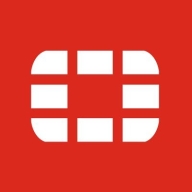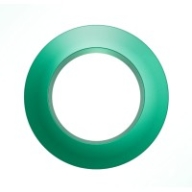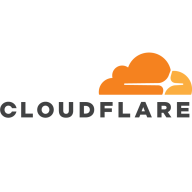


Cato SASE Cloud Platform and Cloudflare One are prominent solutions in the realm of secure access and network optimization. Cato has a robust security framework and integration capabilities, whereas Cloudflare is recognized for its ease of use and DDoS protection.
Features: Cato SASE Cloud Platform is noted for its always-on VPN, centralized management, and next-gen firewall capabilities. It offers extensive integration with existing infrastructures and scalable security solutions. Cloudflare One provides a simplified user experience with strong DDoS protection, easy deployment, and efficient caching capabilities. It excels in role-based access control and configuration simplicity.
Room for Improvement: Cato SASE Cloud Platform can enhance intrusion detection, user interface accessibility, and expand language support. Cloudflare One could improve WAF insights, support response, and documentation detail. Integrations with third-party tools are areas for development for both.
Ease of Deployment and Customer Service: Cato SASE Cloud Platform is praised for its ease of deployment across hybrid and private clouds, complemented by 24/7 responsive support. Cloudflare One focuses on public cloud deployments and is known for its user-friendly interface, simplifying initial setup. Cato offers comprehensive support, while Cloudflare is noted for the simplicity of deployment.
Pricing and ROI: Cato SASE Cloud Platform is seen as more expensive, justified by its features and ROI in operational efficiency. Cloudflare One is competitively priced, providing good performance at a reasonable cost. Both offer solid ROI with reduced network downtime and enhanced reliability.



| Company Size | Count |
|---|---|
| Small Business | 350 |
| Midsize Enterprise | 130 |
| Large Enterprise | 187 |
| Company Size | Count |
|---|---|
| Small Business | 14 |
| Midsize Enterprise | 7 |
| Large Enterprise | 10 |
| Company Size | Count |
|---|---|
| Small Business | 9 |
| Midsize Enterprise | 2 |
| Large Enterprise | 10 |
Fortinet FortiGate excels in providing integrated VPN, firewalling, and Unified Threat Management (UTM) with centralized management and high availability. It supports remote access and comprehensive threat protection, making it a preferred choice for securing networks.
Fortinet FortiGate offers a robust security platform with features such as strong intrusion prevention, application control, and web filtering. Its integration with Active Directory and SD-WAN functionality provides scalable solutions for large networks. Users appreciate its ease of use through centralized management interfaces, ensuring robust security with flexible configurations. However, FortiGate could enhance its graphical interface and technical support responsiveness, address firmware bugs and costly licensing, improve logging, integrate better with third-party tools, and strengthen scalability and memory for log storage. Complexity in configuration and the need for intuitive features are noted challenges, and there's a demand for advanced security, zero-trust capabilities, and AI integration.
What are the key features of Fortinet FortiGate?Fortinet FortiGate is widely implemented across industries like education, finance, and government. Companies use it for firewall protection, VPN, and SD-WAN capabilities, ensuring secure perimeter and data center security. It facilitates remote access management and traffic routing optimization, offering reliable security and connectivity solutions.
Cato Networks is a leading SASE (Secure Access Service Edge) platform, combining SD-WAN and network security to obtain a cloud-native service. Cato Networks optimizes and secures application access for users and identities. The platform delivers a next-generation secure networking architecture that minimizes legacy IT infrastructures’ complexity, costs, and risks. The goal of Cato Suite is to connect any user to any application securely and optimally.
Cato Suite runs on a private global network of more than 65 PoPs (points of presence) connected via SLA-backed network providers. The service can connect branches, data centers, users, and clouds. Cato can be deployed in stages to augment legacy network services.
Cato Suite delivers end-to-end route optimization for WAN and cloud traffic. The architecture is self-healing, enabling a high service uptime.
Cato Features
Cato Cloud has a global backbone to deliver a reliable, global network. Here are some key SD-WAN features of Cato Cloud.
What challenges does Cato Network solve?
MPLS (multi-protocol label switching) networks are usually expensive and limited in their capacity. Cato simplifies migrating to a faster, higher-capacity internet and SASE cloud. Cato SD-WAN appliances enable customers to improve usable capacity and resiliency.
Customers who suffer from the challenge of high latency and network inconsistency can use Cato to deliver a consistent connection and user experience to access on-premises and cloud applications.
Cato’s complete network security stack connects all branch locations to the Cato cloud, therefore protecting all traffic, both internet-bound and WAN, with enterprise-grade, cloud-based security services. This capability avoids having to backhaul internet traffic to a data center or hub or having to implement stand-alone cloud security solutions.
Organizations using Cato notice an acceleration of cloud traffic. Cato achieves this by routing all traffic from the edges to the PoP closest to the data center. Because of the close distance between the two, the latency is near zero.
Reviews from Real Users
An IT manager/project coordinator at a healthcare company says that “[Cato is] a cloud-based solution that integrates well with everything. They are the classic SaaS solution.”
Yeong-Gi L., a network engineer at Snetsystems, notes that “The solution is very stable. The scalability is quite good. Technical support was always helpful and responsive. The integration capabilities are not a problem at all.”
"The most valuable feature is that it also works as a next-gen firewall because it has security features," says Lorenzo S., senior solutions consultant Lead at MDI.
Cloudflare One is a single-vendor Secure Access Service Edge (SASE) platform that enables Zero Trust security and any-to-any connectivity across enterprise applications, users, devices, and networks. Cloudflare One helps organizations simplify, modernize, and consolidate their IT architecture by converging security and networking services on our single global network and control plane.
Many organizations start by adopting our Security Service Edge (SSE) services — like ZTNA, SWG, CASB, and DLP — to reduce their attack surface, stop threats like phishing and ransomware, protect data, and apply identity-based Zero Trust verification across web, SaaS, and private app environments. Others prioritize simplifying network connectivity across offices, data centers, and cloud environments with our WANaaS.
Every service is available for customers to run in every location across Cloudflare’s global network, which today spans 330+ cities in 120+ countries, so you can scale connectivity with fast, consistent protections everywhere.
We monitor all Secure Access Service Edge (SASE) reviews to prevent fraudulent reviews and keep review quality high. We do not post reviews by company employees or direct competitors. We validate each review for authenticity via cross-reference with LinkedIn, and personal follow-up with the reviewer when necessary.